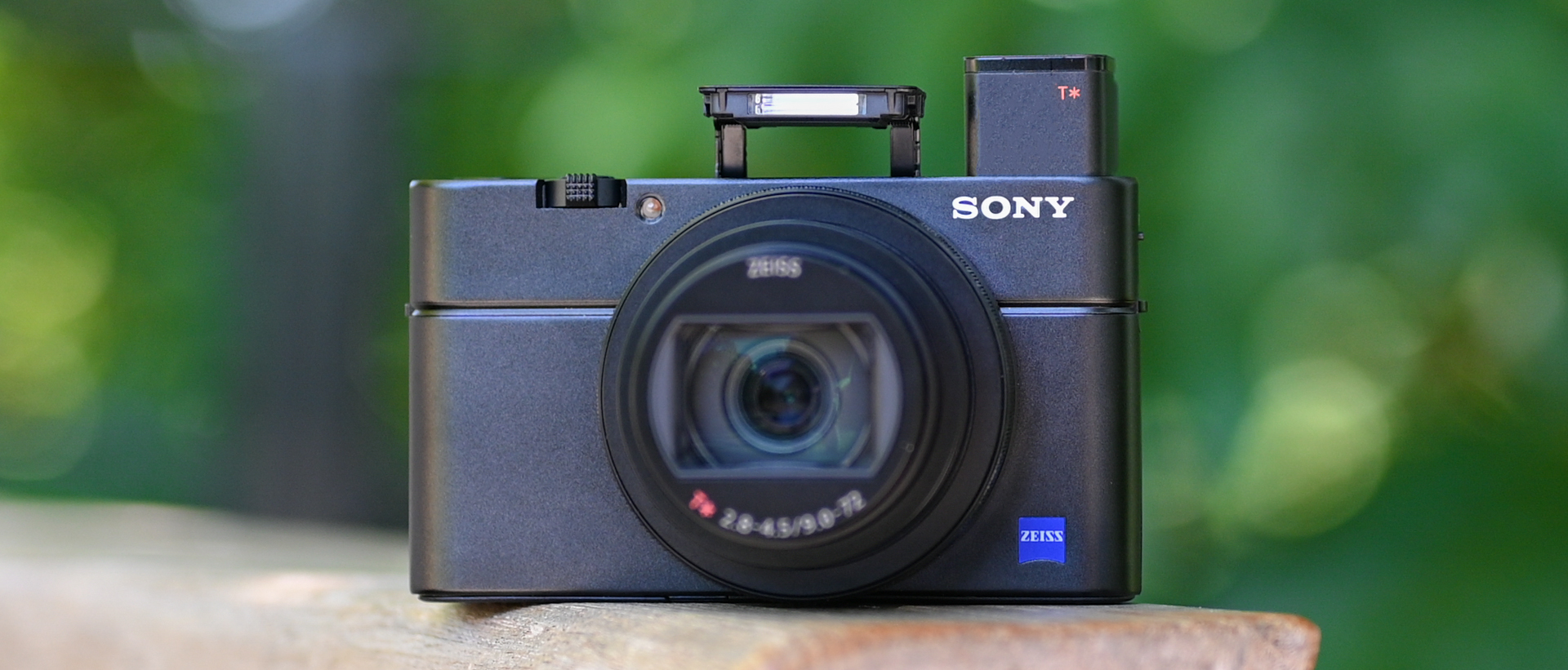Why you can trust TechRadar
Performance
- Image stabilization system appears very effective
- Viewfinder performs well
- Touchscreen could do with more work
Sony has received some stick for its menu systems in the past, which are somewhat overflowing with options, although color coding has made them easier to navigate in recent models.
What we have on the RX100 VII is much the same as before. There's a lot to wade through, but the option to set up a tab with your own options is a saving grace, although there's still the odd annoying abbreviation here and there.
The touchscreen works well for setting the focusing point, being nice and responsive to even lighter touches, and you can also use the screen as a touch pad when using the viewfinder – always handy in lieu of a joystick-type control.
The screen can also be used to zoom into, and move around, captured images, but that's about it. It doesn't appear that anything has actually changed from the RX100 VI, which means the screen is fine for basic tasks, but it does place the camera behind its peers elsewhere; it would be good to see touch control come to the Fn menu at the very least in future models.
The viewfinder is a fair bit smaller than what we're used to on mirrorless models, but this is to be expected; the main thing is that it's relatively bright and sharp. While the lack of any kind of eyecup normally makes such viewfinders a bit of a pain to use in brighter conditions without cupping your hand around them, the RX100 VII's finder maintains very good visibility even when you don't.
The RX100 VII's 90fps burst capabilities are one of the main things that separate it from the previous model – and indeed, every other compact camera. It's certainly impressive that the camera is able to reach these heights and spit out full-resolution images, but the fact that its buffer depth is just seven frames makes you wonder just how practical it is.
In use, the camera will capture the first seven frames as you depress the button, and discard anything afterwards. Seven frames at 90fps equates to less than 0.8 seconds of reality being captured (though it'll be more if you use the 30fps or 60fps options), so you need to have pretty sharp reflexes to nail the perfect moment.
Sign up for breaking news, reviews, opinion, top tech deals, and more.
Were the camera able to offer deeper buffer depths at its 60fps and 30fps settings, this burst rate would perhaps be more usable; but it can't, and presumably there's a technical reason for this, possibly the lack of UHS-II support. Ultimately, it ends up being impressive to play with, but potentially of limited use in reality.
Most people would be better off using the more standard burst mode, which can chomp through a still respectable 20fps with autofocus and auto-exposure working throughout. Using the fastest UHS-I card we could get our hands on, the camera was able to capture round 100 raw and JPEG frames simultaneously, although, as you'd expect, these can take a little time to fully write to the card.
Image quality
- Great details throughout, though corner softness visible
- Great noise control at moderate ISO settings
- Detailed 4K footage with effective face detection and tracking
We were impressed with the image quality from the previous RX100 VII, so does the Sony RX100 VII live up to our expectations?
In short, the camera manages to produce strong images across a range of conditions, with minimal intervention required. Detail is excellent overall, and what's particularly good is how well this is maintained when using ISO settings towards the middle of the sensitivity range; plenty of detail lurks in slightly noisier images, so it's just a case of removing this noise.
On the whole, details are great in the center of the frame, and are generally well maintained to the edges, with just slight softness in the corners at both ends of the lens. This appears to be worse at the wide-angle end than at telephoto lengths, although it does improve a little as you stop down the aperture.

Click here to view the full-size image

Click here to view the full-size image

Click here to view the full-size image

Click here to view the full-size image

Click here to view the full-size image

Click here to view the full-size image

Click here to view the full-size image

Click here to view the full-size image

Click here to view the full-size image
Exposures are generally sound, although scenes with a relatively wide tonal range – if you're shooting indoors with windows in the frame, for example – will see a loss of detail in their highlights. Some of the details in these areas can be brought back with careful raw processing, though.
Colors are very nice on standard settings, and there's a particularly broad range of color options in-camera if the default Standard mode isn't quite to your taste. It's a shame, however, that the absence of in-camera raw processing means these can't be tweaked post-capture without recourse to a computer.
Some lateral chromatic aberration can be seen in images, although the worst of this is lifted away from JPEGs in-camera, and it can be removed from raw files fairly effortlessly.
Video quality has impressed on previous RX100 models, and it continues to shine here. Detail is abundant, and rolling shutter is kept to a minimum as the camera moves around the scene. As with pretty much any compact camera like this, wind noise is easily picked up by the built-in microphones, although the fact that you can hook up an external mic gives the RX100 VII an advantage over many other models.
Current page: Performance and image quality
Prev Page Build, handling and AF Next Page Verdict and competition